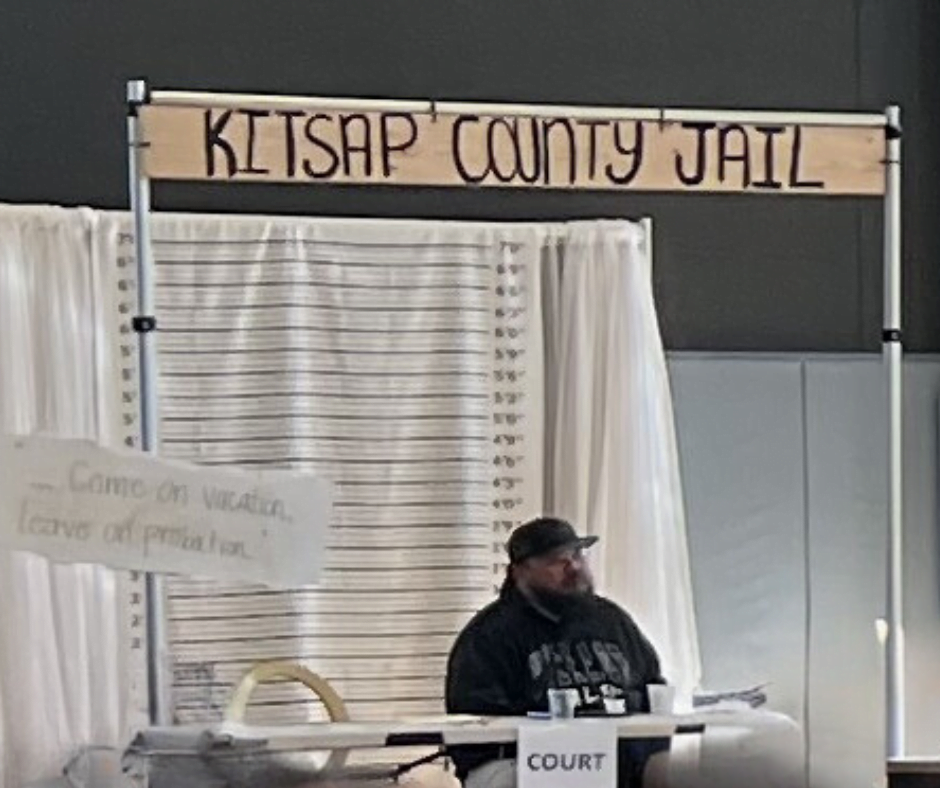by Beth Wilson
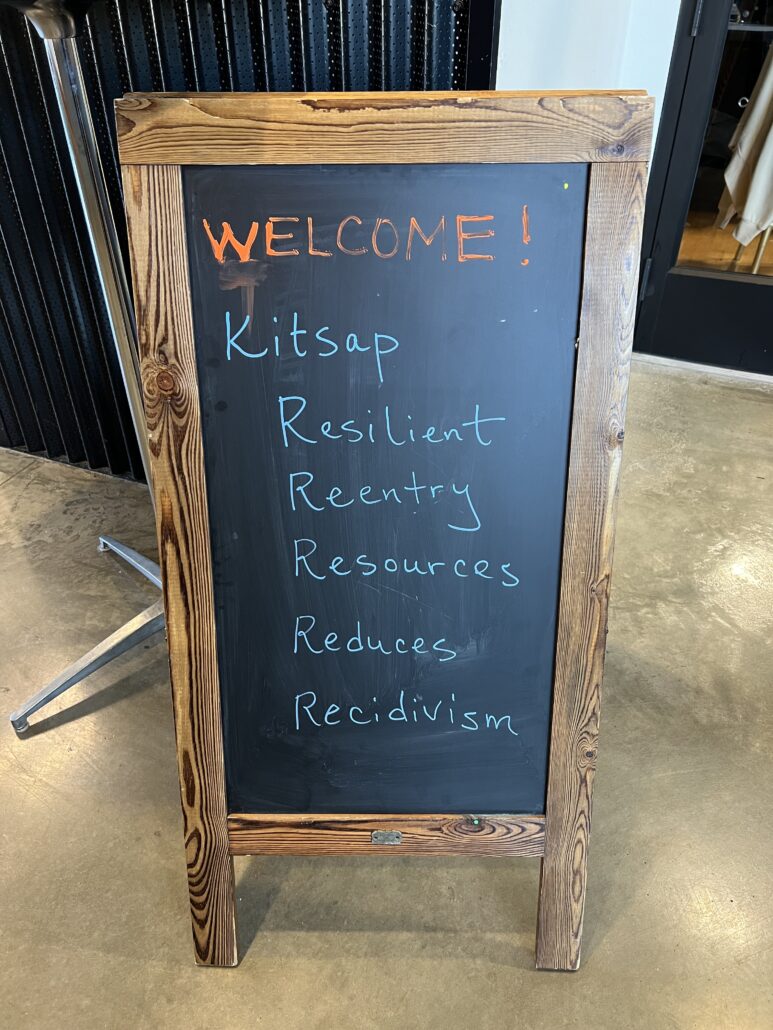
“You’re being released from jail. All of your resources are in this packet, including your Life Card, which tells you your obligations and what services you need. Each table in this gymnasium represents a location you may need to visit, and you must use one transportation ticket to get to each one. You can begin Week One now. Good luck.”
That was the introduction to the Kitsap Reentry Simulation that Darryl Riley gave last week at the Marvin Williams Recreation Center, organized by Kitsap Strong, the Up From Slavery Initiative, and other partners. I (Beth Wilson) attended along with the WSTC Liaison Team, Michelle Lamb and Kalina Harris, and at that event, we “experienced” the challenges faced by individuals reentering society after incarceration.
This Is My Life
My packet contained this information about my identity, Kalvin. I had served five years in federal prison for possession with intent to distribute a substance. My Life Card was filled with weekly requirements such as “NA Meeting,” “SUD Treatment,” “Probation,” “Rent,” and more.
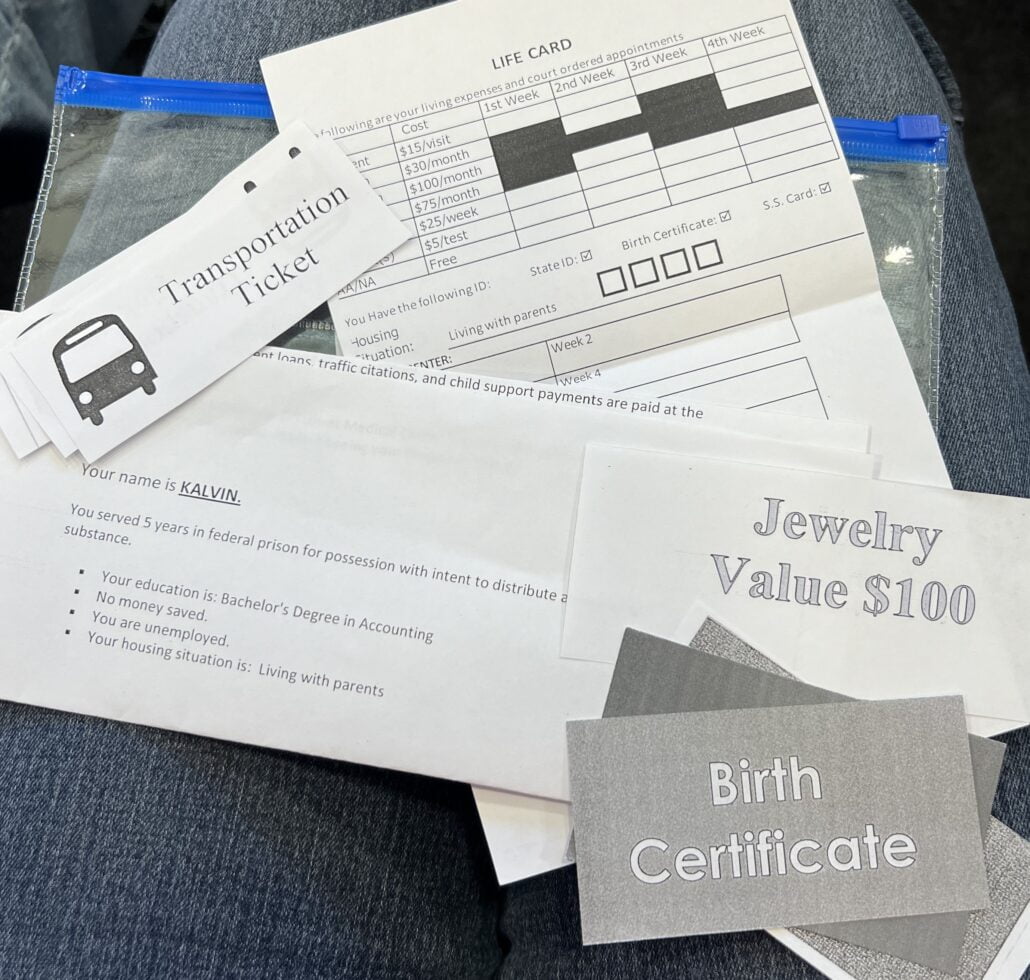
My packet didn’t include money, but it did have a slip representing jewelry to pawn and three transportation tickets. Most importantly, I had the three forms of ID necessary for all the services and transactions ahead of me. The participants whose packets came without the required IDs had to stand in a long line stretching across the gym.
How I Started
Since every table required a transportation ticket, my first goal was to pawn the jewelry to get money to buy more tickets. After waiting in long lines, I finally had ten tickets and $40 in my pocket – less than half what the jewelry was worth. I bought food for the week and went to the table representing Narcotics Anonymous meetings. The table was covered with slips of paper. I turned one over: “You were disruptive at an NA Meeting. Dismissed early.” Instead of a check mark, I got an X on my Life Card for that week. I went to treatment, paid the fee, and handed over my transportation ticket, but the slip I drew said I was five minutes late, so I was turned away. Another big X.
At the end of the first week (15 minutes or so), Darryl Riley asked how many people were able to buy food. Five or six of us raised our hands. How many went to treatment? Only two. Did everyone get their IDs? At least 10 shook their heads. No IDs.
The next week, I went to the job table and drew a good, full-time job – not too surprising, considering that Kalvin has a bachelor’s degree in accounting (although the felony would likely keep him from gaining any state licensure in real life). I couldn’t start right away, though. First, I had to take a drug test. I headed to the medical table for a UA, but then discovered I didn’t have enough money left to pay for the test. It looked like $10 was going to keep me from getting a good, full-time job.
How I Failed
I looked across the half court line and saw the Plasma table. They would give me $25 for donating plasma. At that table, I handed over a transportation ticket and drew a slip: “New piercings. Can’t donate today.” I got another X on my card.
With no money and no way to get money, I wandered around trying to decide my next move. A “Peer Support” person approached and offered help, taking me to the front of the Social Services line. Unfortunately, all they could offer was food, which I didn’t need. I took a food voucher anyway and then decided to go to the Chance table. I chose a slip labeled “Sell controlled substances.” Would I get the money I needed to take the UA and start my job? I turned it over.
Jail.
But you know what? It was a relief to stop struggling and go across the room to the Jail. I was almost disappointed when Michelle bailed me out, and I had to start fending for myself again.
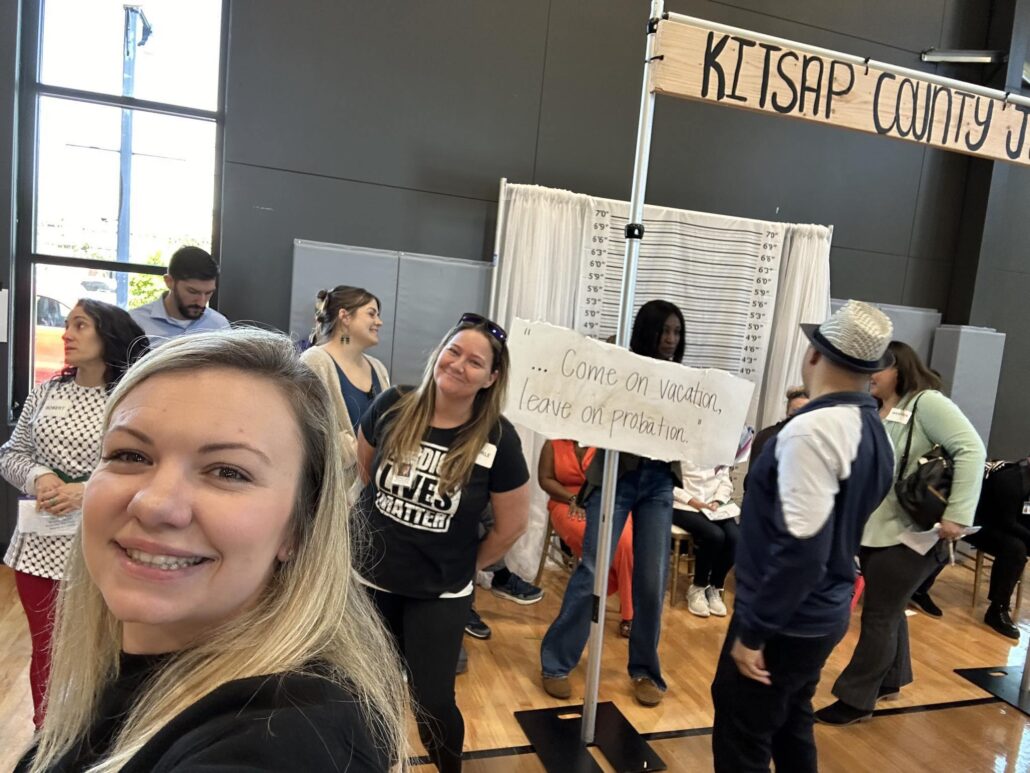
Winning Is Impossible
The next two “weeks” went similarly – standing in long lines for resources so I could get a negative UA and go to work. I didn’t try the Chance table again, but on the third try at the Plasma table, I was finally able to give plasma and get the $25 I needed.
At the very end of the hour-long simulation, I earned my first paycheck. If I had been able to keep “playing,” I would’ve tried to use the money in week five to pay for probation fees, court fees, rent, food, shoes, and student loans, and to attend an NA meeting and SUD treatment and do a UA…if I had time. My job used up so much of the week though (7 minutes), that I’m not sure I would’ve been able to fit it all in.
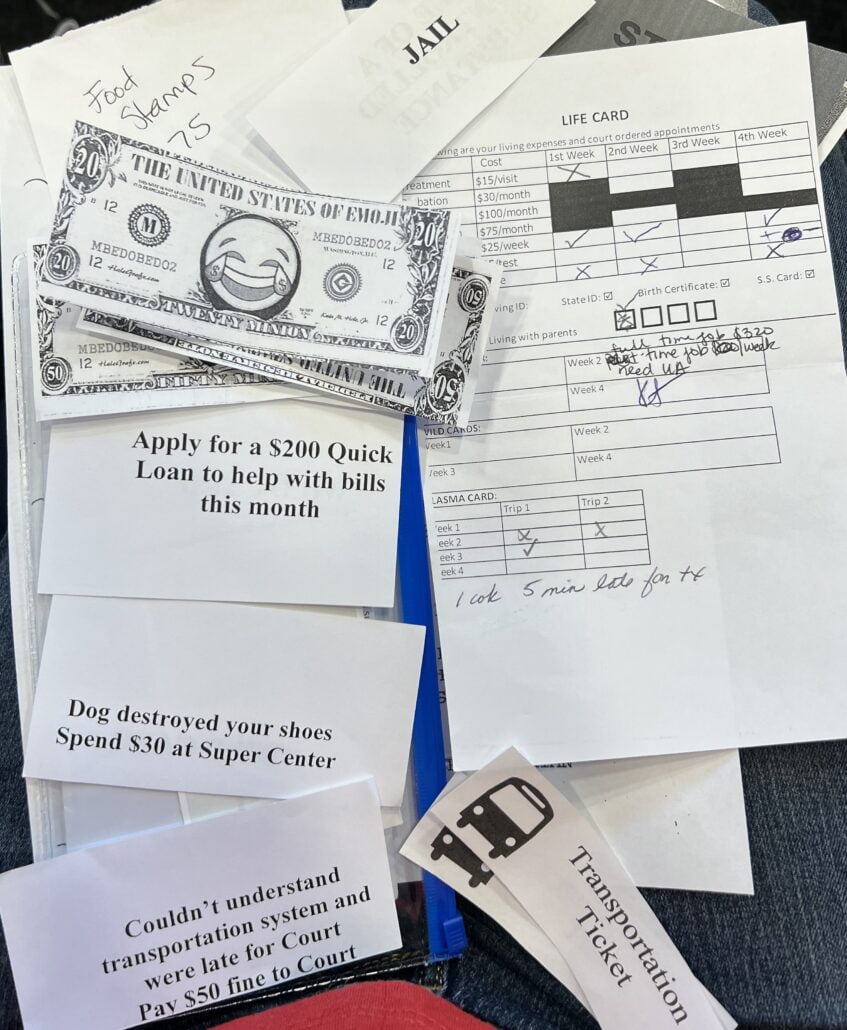
It’s Not a Game, Though
“That’s how it really is,” Michelle told me as we left the gym. “Even with mine and Kalina’s help figuring out what participants need and setting up their appointments and providing bus passes and transportation, it’s still a huge challenge for them just to meet their post-incarceration obligations. There are so many barriers.”
It felt like a personal attack
Intellectually, I knew this before. I’ve read about the barriers and challenges. Experiencing it within the context of a simulation made it real in a new way, though.
It felt like a personal attack as I tried over and over to fulfill the obligations that were set for me on my Life Card. And then as, over and over, I was turned away without the resources or resolution I needed for one reason or another, most of which weren’t in my control. It’s a set-up – they don’t want me to succeed, whispered through my mind. Just give up and go back to jail so you don’t have to worry about it anymore.
If an hour-long simulation can bring me to this, how would I fare if I were out on the streets? How long would I last before giving up?
WSTC: Challenge Accepted
At West Sound Treatment Center, we don’t want anyone to have to ask themselves these questions. So, it’s these challenges that we want to overcome through our R.E.A.L. Program, our Liaison Program, our New Start Reentry Program, and our Recovery Housing. With different funders and partners and a range of resources, they are all geared toward providing Peer Support, transportation, advocacy, treatment, and housing.
These programs are designed to help people meet all the obligations on their own personal “Life Card” so they can finish each week feeling like a winner – whether that’s making it to all their treatment and court dates, getting an ID and a phone, obtaining food and shelter…or, frequently, all of the above.
Be the Change
If you ever get a chance to participate in a Reentry Simulation, I highly recommend it. But you don’t have to experience that exercise in empathy to understand that the reentry process is rife with challenges and barriers. And when you get to that point, it’s natural to start feeling compassion for your fellow community members who are struggling.
So, what can we do to help? Most of us don’t have the opportunity to be members of a R.E.A.L. Team or a Liaison Team, but there is something all of us can do to lower post-incarceration barriers and challenges: Break the stigma.
By embracing empathy and understanding, we can create a community that supports and uplifts those striving to rebuild their lives. Together, we can help ensure everyone has a fair chance at a fresh start.

Beth Wilson is the Communications Coordinator at West Sound Treatment Center.

